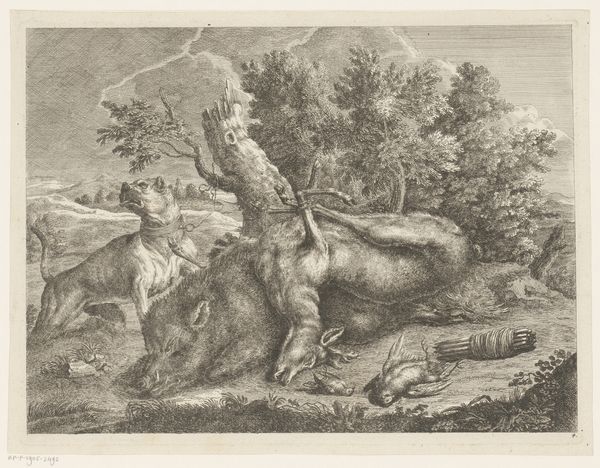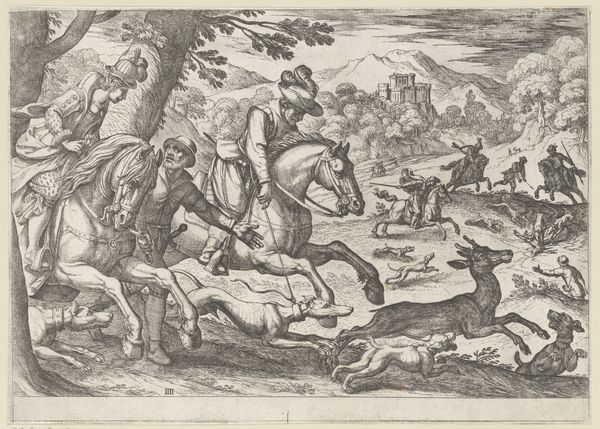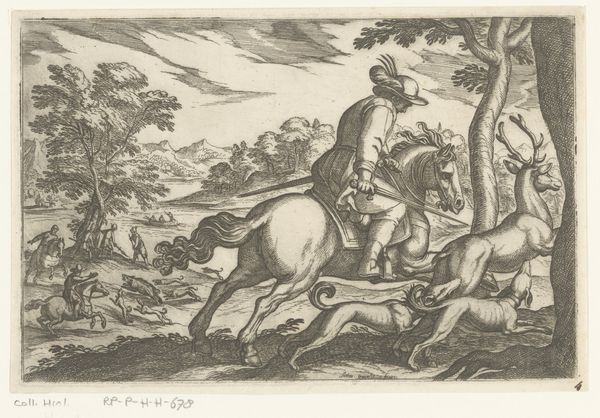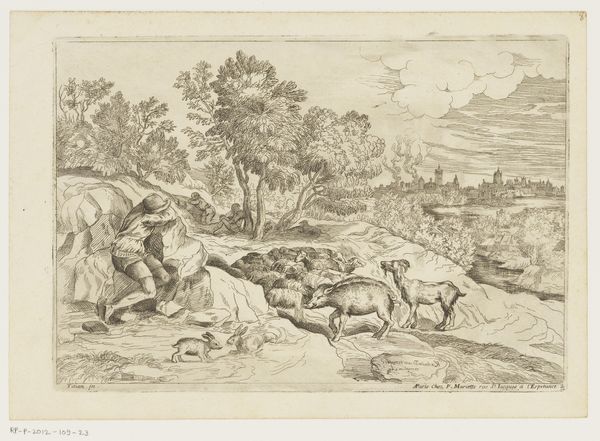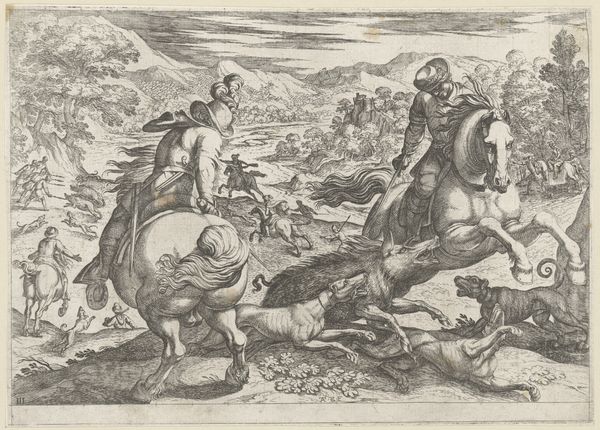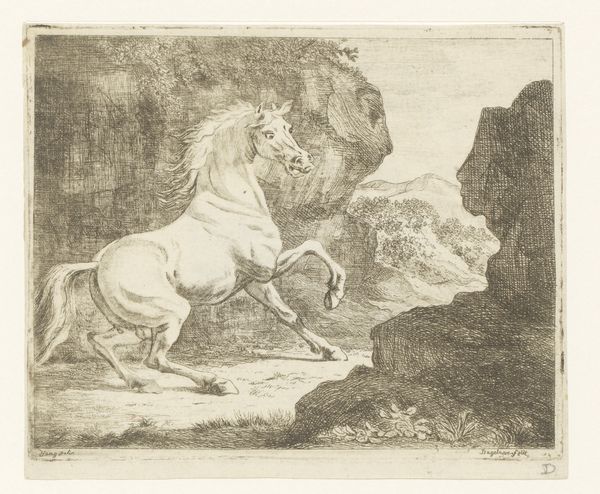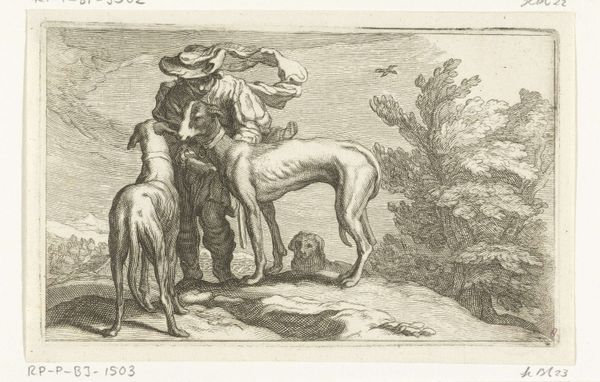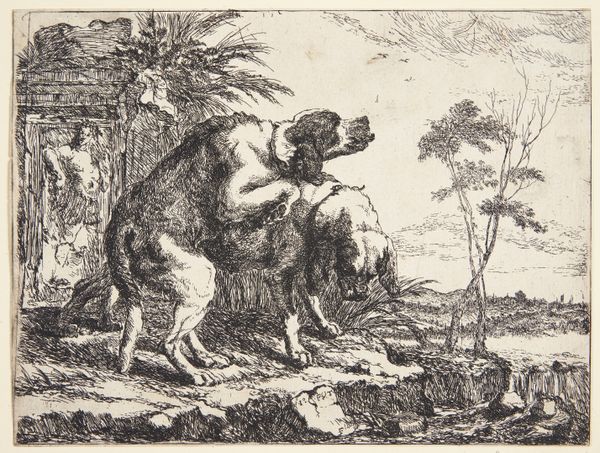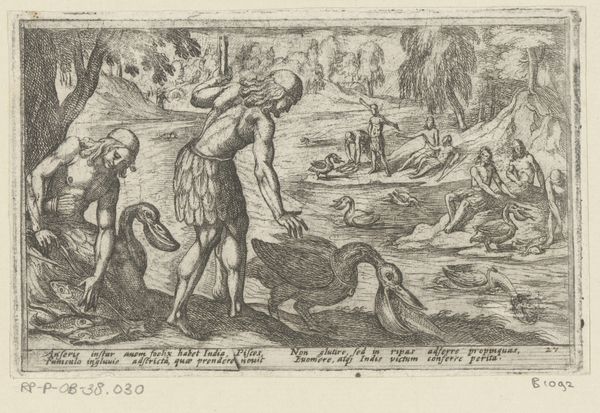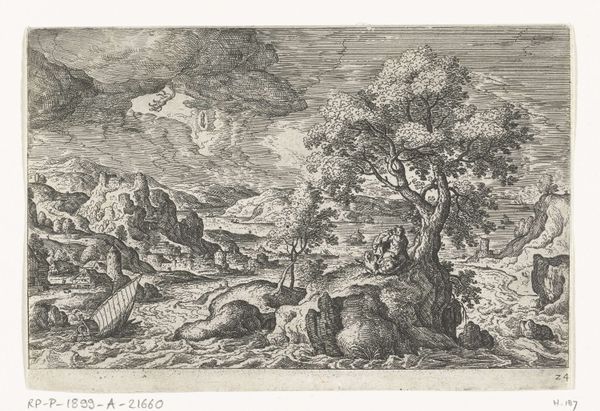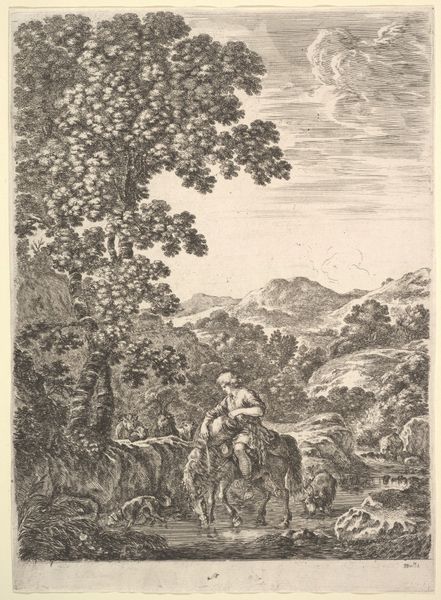
print, etching
#
baroque
#
animal
# print
#
etching
#
dog
#
landscape
#
figuration
#
genre-painting
Dimensions: height 139 mm, width 173 mm
Copyright: Rijks Museum: Open Domain
Editor: This is "Teef voedt haar jong," or "Bitch feeding her young," an etching by Johan le Ducq, made in 1661. It’s quite a simple image, but very tender; a dog lying in a landscape, nursing her pups. How do you interpret this work? Curator: Well, I see a few things here. The choice to depict such a domestic scene, in 17th-century Netherlands, pushes against the typical heroic narratives we often see in art of that period. It's an intimate view of motherhood and animal life within a landscape. We have to ask: who was this work for, and what was it meant to communicate? Consider how depictions of women and animals at the time often reinforced patriarchal power structures. Does this image reinforce or subvert that tradition? Editor: That's interesting. I hadn't thought about it in terms of challenging power structures. It just seemed like a simple, sweet image. So, you’re saying it’s possible that an image of such common intimacy could have political undertones? Curator: Exactly. And what does it tell us about humanity's evolving relationship with animals? The act of breastfeeding here becomes a central point for questioning established social roles and power dynamics. Is there a parallel between the mother dog and representations of human mothers during that period? Editor: It definitely makes me look at the image in a completely different way. Before, I just saw a mother and her pups. Now, I see the artist making a statement, perhaps even questioning societal expectations. Curator: Precisely. This invites us to think critically about how we frame gender, identity, and our relationship to the natural world. These aren't just formal considerations, but opportunities to understand the work within broader conversations about equity and social change. Editor: I guess that art always has a deeper conversation that goes far beyond its appearance, whether it’s visible right away, or not. Curator: Indeed. And by analyzing the social context of the artwork, we can develop more informed perspectives about what an image like this might have represented then and what meanings it has now.
Comments
No comments
Be the first to comment and join the conversation on the ultimate creative platform.
